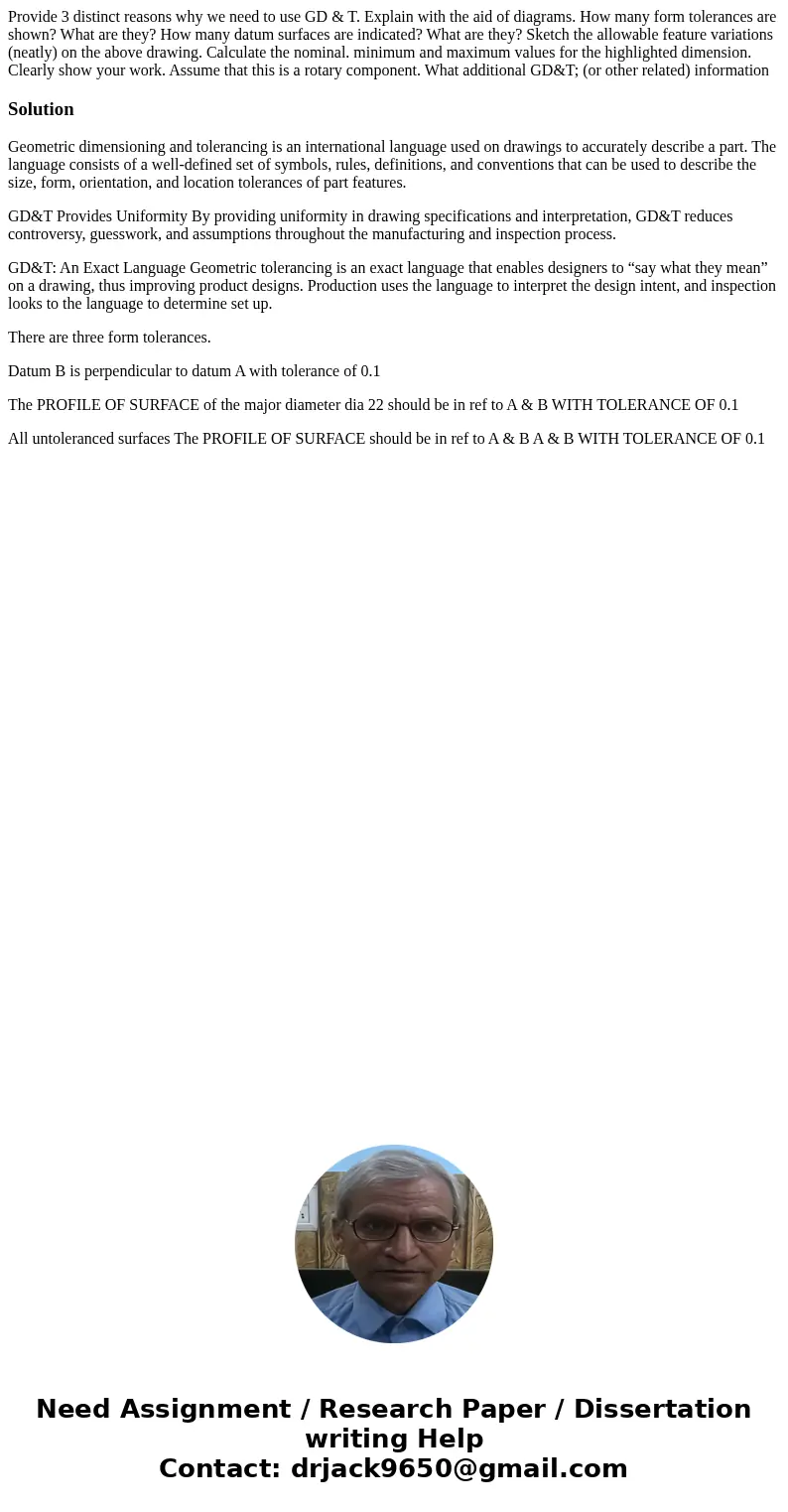Provide 3 distinct reasons why we need to use GD T Explain
Solution
Geometric dimensioning and tolerancing is an international language used on drawings to accurately describe a part. The language consists of a well-defined set of symbols, rules, definitions, and conventions that can be used to describe the size, form, orientation, and location tolerances of part features.
GD&T Provides Uniformity By providing uniformity in drawing specifications and interpretation, GD&T reduces controversy, guesswork, and assumptions throughout the manufacturing and inspection process.
GD&T: An Exact Language Geometric tolerancing is an exact language that enables designers to “say what they mean” on a drawing, thus improving product designs. Production uses the language to interpret the design intent, and inspection looks to the language to determine set up.
There are three form tolerances.
Datum B is perpendicular to datum A with tolerance of 0.1
The PROFILE OF SURFACE of the major diameter dia 22 should be in ref to A & B WITH TOLERANCE OF 0.1
All untoleranced surfaces The PROFILE OF SURFACE should be in ref to A & B A & B WITH TOLERANCE OF 0.1

 Homework Sourse
Homework Sourse